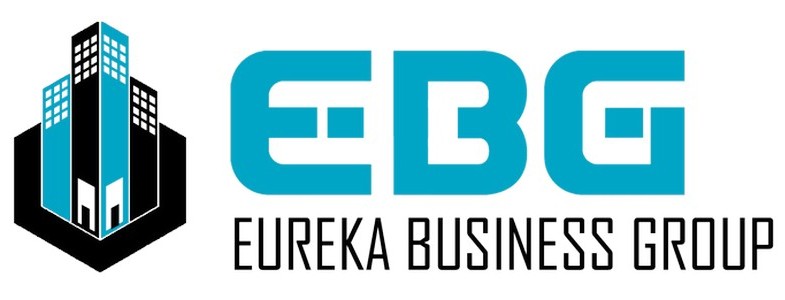- Home
- Industrial
- Industrial Investors Resources
- How to Secure Financing for Industrial Flex Property Investments!
How to Secure Financing for Industrial Flex Property Investments!
Investing in industrial flex properties can be a smart, lucrative choice for investors looking to tap into a flexible real estate market with growing demand. These properties, which often combine warehouse, office, and light manufacturing spaces, are highly adaptable to diverse tenant needs. However, securing financing for these investments can be complex due to unique property features and evolving market dynamics. In this guide, we’ll explore key strategies and resources to help you secure financing for industrial flex property investments and position yourself for success.
Understanding Industrial Flex Properties and Financing Challenges
Industrial flex properties differ from standard commercial properties. Their multifunctional design allows for a wide range of uses, making them attractive to various tenants. However, lenders may find them challenging to finance because of fluctuating property values and variable tenant uses. Flex properties are also tied closely to economic and market shifts, which can impact lease rates and occupancy levels.
Securing financing for these properties generally involves navigating a mix of traditional and specialized lending options, assessing your financing needs, understanding the property market, and building a solid financial profile to reassure lenders of the property’s investment viability.
1. Evaluate Your Financing Needs
Before seeking financing, clarify your investment goals, budget, and property requirements. Industrial flex properties can vary significantly in size, purpose, and location, so determining what type of property you’re looking to invest in will help you narrow down suitable financing options. Consider these factors:
- Purchase price and initial costs: Evaluate the property’s purchase price, closing costs, and any immediate repairs or renovations.
- Loan-to-value ratio (LTV): Lenders typically finance up to 75-80% of a property’s value for commercial real estate, meaning you may need a 20-25% down payment.
- Projected rental income: Assess potential tenant types and rental income projections. This can help calculate your cash flow, loan repayment capability, and overall profitability.
2. Traditional Financing Options
Traditional loans, such as commercial mortgages from banks or credit unions, are one of the first avenues investors explore. These loans are typically offered at lower interest rates, making them appealing to borrowers with solid credit and financial backgrounds.
Pros and Cons of Traditional Loans
| Pros | Cons |
|---|---|
| Lower interest rates | More rigorous credit and financial checks |
| Long repayment terms | Slower approval process |
| Access to additional services | May require collateral beyond the property |
Key Considerations for Traditional Loans
Traditional lenders will assess the following:
- Credit Score: A credit score of 680 or higher is typically ideal, with better terms offered to higher scores.
- Debt-to-Income Ratio (DTI): Lenders look for a DTI under 40% to reduce the risk associated with high debt levels.
- Business Plan and Projections: A well-outlined plan that details anticipated tenant mix, rental rates, and property management strategies can demonstrate that your investment is well thought out and profitable.
3. Explore SBA Loans for Industrial Flex Property Investments
The Small Business Administration (SBA) provides loan programs suitable for real estate investments, especially for industrial flex properties that are part owner-occupied. The SBA 504 Loan Program is particularly beneficial for investors, as it offers competitive terms and can finance up to 90% of the purchase price, reducing the down payment requirement.
Key Points about SBA Loans:
- Eligibility: The borrower must occupy at least 51% of the property.
- Loan Amount: SBA 504 loans offer up to $5 million for eligible projects, including the purchase of land, equipment, and facility construction.
- Repayment Terms: Terms are typically 10, 20, or 25 years, making it manageable for longer-term investments.
The SBA loan process can be slower than traditional financing due to strict requirements and documentation, but the benefits make it worthwhile for many investors.
4. Consider Commercial Bridge Loans for Short-Term Financing
For investors looking at properties with high renovation needs or intending to refinance quickly, a commercial bridge loan can be a valuable tool. Bridge loans offer short-term, interest-only financing, allowing investors to acquire a property and make necessary improvements before securing permanent financing.
Pros and Cons of Commercial Bridge Loans
| Pros | Cons |
|---|---|
| Quick access to capital | Higher interest rates |
| Flexible property and credit requirements | Short repayment terms (6 months to 3 years) |
| Useful for value-add properties | Higher fees and upfront costs |
Bridge loans allow investors to add value to a property and increase its appraisal, potentially enabling more favorable terms when they refinance into a permanent loan.
5. Leverage Private Lenders and Real Estate Investment Firms
Private lenders and real estate investment firms provide additional flexibility and are often willing to finance properties that may not meet traditional or SBA loan requirements. They offer loans with streamlined approvals, quicker funding, and a more flexible credit approach. This route is appealing for investors with non-traditional financial situations or those investing in value-add properties.
What to Expect from Private Lenders:
- Interest Rates: Generally higher than traditional lenders but often flexible based on the investor’s experience and the property’s potential.
- Loan Terms: Terms vary widely, typically between 6 months and 5 years, with options for extension.
- Credit Requirements: Private lenders may be more accommodating of lower credit scores or unique property types but will evaluate the property’s marketability and potential for quick refinancing or sale.
6. Real Estate Syndication or Partnerships for Larger Investments
Industrial flex property investments can come with a significant price tag, which sometimes makes joint financing through real estate syndication or partnerships an ideal solution. Syndication allows a group of investors to pool resources to acquire and manage a property, providing a collective financing approach. Each partner contributes financially, while experienced sponsors oversee property management and operational aspects.
Advantages of Syndication:
- Lower Individual Capital Investment: The financial commitment is shared, which reduces individual capital requirements.
- Access to Expertise: Experienced sponsors bring market knowledge and management expertise, enhancing the property’s chances of success.
- Scalability: Syndication enables investors to participate in larger projects with less personal investment and risk.
However, it’s essential to carefully vet partners, clarify roles, and understand fee structures and potential exit strategies.
7. Build a Strong Financial Profile and Investment Proposal
Regardless of the financing route, having a well-prepared financial profile and comprehensive investment proposal can significantly increase your chances of approval. Key steps include:
- Prepare Financial Statements: Provide up-to-date statements that include assets, liabilities, and credit history.
- Outline a Business Plan: Include property details, intended use, market analysis, and financial projections.
- Showcase Industry Expertise: If you or your partners have a strong background in real estate or related industries, emphasize this to build lender confidence.
- Demonstrate Cash Flow Potential: Showing a detailed breakdown of rental income, expenses, and cash flow projections can help lenders understand how you plan to service the debt and generate profit.
8. Stay Informed of Market Conditions and Adjust Your Strategy
The industrial flex property market is subject to economic shifts, local demand changes, and industry trends. Lenders will also be aware of these factors and may adjust terms or availability accordingly. By staying updated on market conditions, you can better anticipate financing requirements, interest rates, and loan terms. Regularly consulting with real estate professionals and financial advisors will also help you refine your strategy and adjust to market changes.
Conclusion
Securing financing for industrial flex property investments requires preparation, flexibility, and an understanding of your available options. By evaluating your needs, exploring diverse financing solutions like SBA loans, bridge loans, and syndications, and presenting a well-supported investment proposal, you can increase your chances of securing the funding necessary to make your industrial flex property investment a success. Embrace the market’s unique opportunities, and with the right financing, your investment can be both rewarding and profitable in today’s dynamic real estate landscape.



